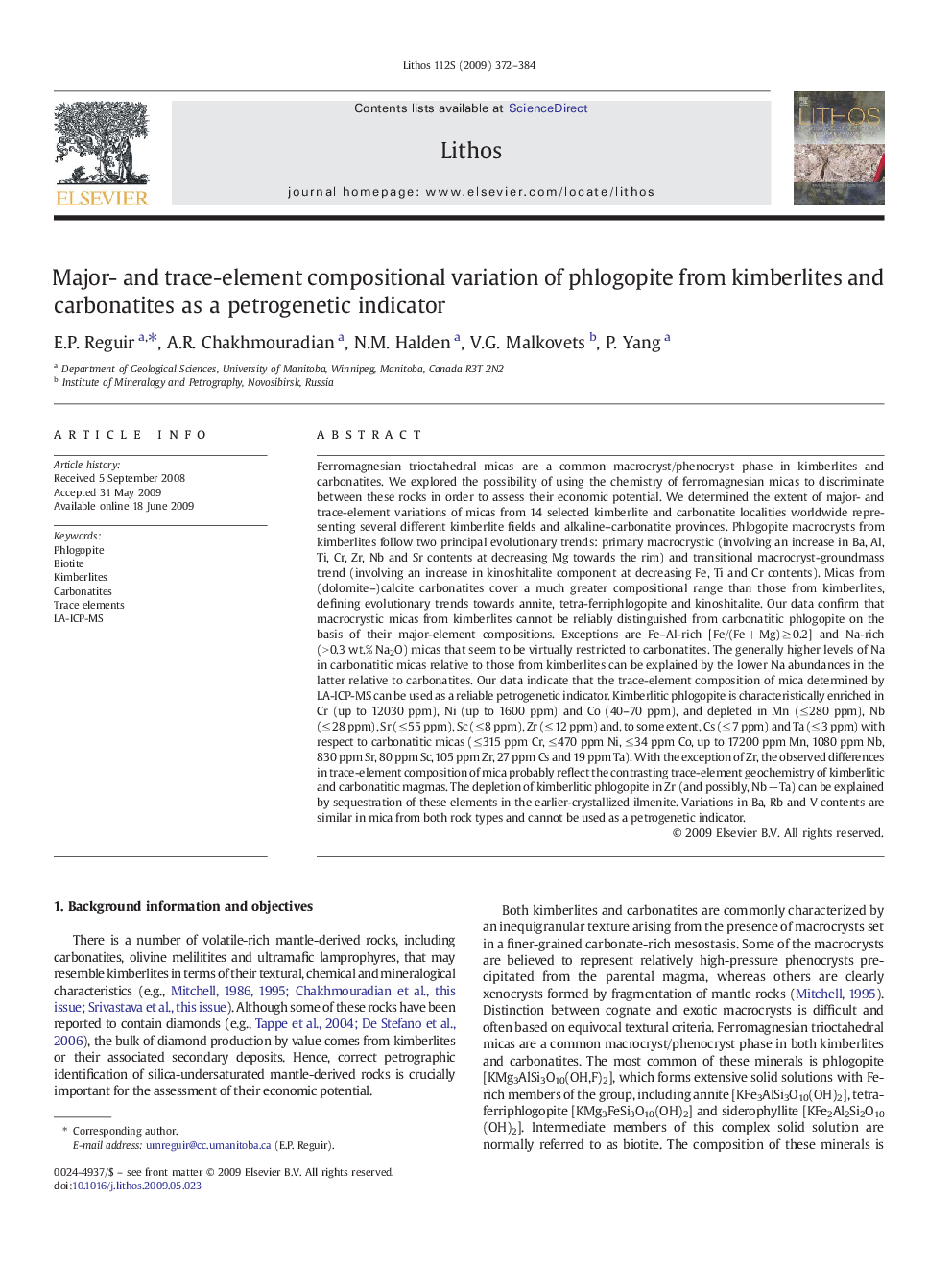| Article ID | Journal | Published Year | Pages | File Type |
|---|---|---|---|---|
| 4717275 | Lithos | 2009 | 13 Pages |
Ferromagnesian trioctahedral micas are a common macrocryst/phenocryst phase in kimberlites and carbonatites. We explored the possibility of using the chemistry of ferromagnesian micas to discriminate between these rocks in order to assess their economic potential. We determined the extent of major- and trace-element variations of micas from 14 selected kimberlite and carbonatite localities worldwide representing several different kimberlite fields and alkaline–carbonatite provinces. Phlogopite macrocrysts from kimberlites follow two principal evolutionary trends: primary macrocrystic (involving an increase in Ba, Al, Ti, Cr, Zr, Nb and Sr contents at decreasing Mg towards the rim) and transitional macrocryst-groundmass trend (involving an increase in kinoshitalite component at decreasing Fe, Ti and Cr contents). Micas from (dolomite–)calcite carbonatites cover a much greater compositional range than those from kimberlites, defining evolutionary trends towards annite, tetra-ferriphlogopite and kinoshitalite. Our data confirm that macrocrystic micas from kimberlites cannot be reliably distinguished from carbonatitic phlogopite on the basis of their major-element compositions. Exceptions are Fe–Al-rich [Fe/(Fe + Mg) ≥ 0.2] and Na-rich (> 0.3 wt.% Na2O) micas that seem to be virtually restricted to carbonatites. The generally higher levels of Na in carbonatitic micas relative to those from kimberlites can be explained by the lower Na abundances in the latter relative to carbonatites. Our data indicate that the trace-element composition of mica determined by LA-ICP-MS can be used as a reliable petrogenetic indicator. Kimberlitic phlogopite is characteristically enriched in Cr (up to 12030 ppm), Ni (up to 1600 ppm) and Co (40–70 ppm), and depleted in Mn (≤ 280 ppm), Nb (≤ 28 ppm), Sr (≤ 55 ppm), Sc (≤ 8 ppm), Zr (≤ 12 ppm) and, to some extent, Cs (≤ 7 ppm) and Ta (≤ 3 ppm) with respect to carbonatitic micas (≤ 315 ppm Cr, ≤ 470 ppm Ni, ≤ 34 ppm Co, up to 17200 ppm Mn, 1080 ppm Nb, 830 ppm Sr, 80 ppm Sc, 105 ppm Zr, 27 ppm Cs and 19 ppm Ta). With the exception of Zr, the observed differences in trace-element composition of mica probably reflect the contrasting trace-element geochemistry of kimberlitic and carbonatitic magmas. The depletion of kimberlitic phlogopite in Zr (and possibly, Nb + Ta) can be explained by sequestration of these elements in the earlier-crystallized ilmenite. Variations in Ba, Rb and V contents are similar in mica from both rock types and cannot be used as a petrogenetic indicator.
